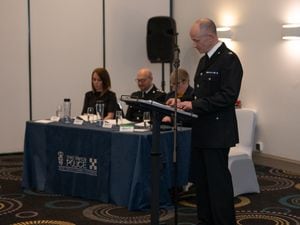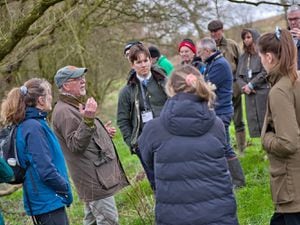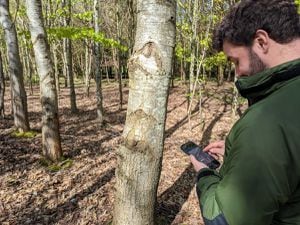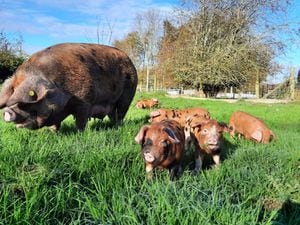Church spotlight: All Saints Church in Clive
The term "landmark" is one that is often overused, and sometimes very loosely.
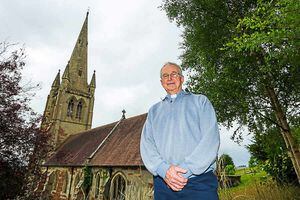
However, few could argue with the author Arthur Mee when he described All Saints Church in Clive as "one of Shropshire's beauty spots, its tall spire and stately tower are a landmark for miles".
Perched on a hill above the village, the church well and truly dominates the skyline in this picturesque part of north Shropshire.
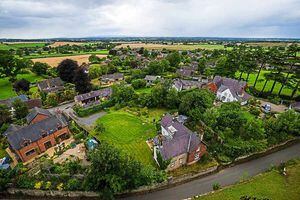
"You can see it for miles around," says the Rev Preb Rob Haarhoff, who arrived in Shropshire 13 years ago after being forced to leave his native Zimbabwe. "We have open days where people can go right to the top, and if somebody telephones and asks to go up, we will usually try to accommodate them."
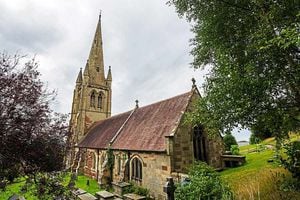
Capacity: 170 (seated)
In his book, An Architectural Account of the Churches of Shropshire, expert David Cranage said: Few churches in Shropshire are so elaborately fitted up. The carving of the font, pews, lectern, pulpit, screens is as fine as can be seen almost anywhere in a modern building
Daniel Wycherley, father of the famous Restoration playwright William Wycherley, was the owner of Clive Hall, and his gravestone of 1697 is preserved in the east wall of the graveyard.
And he says the usual response is one of amazement at the glorious views across the rolling countryside.
"Some people are pretty overcome by the height, but most are overcome by the incredible view that you have," he says.
As well as the tower, the church also has top-quality wood carvings and some spectacular stained glass windows, and most of these features relate to the generosity of two men: shipping magnate J J Bibby and tea plantation owner Thomas Meares, who used their great wealth to commission the rebuilding of the church by renowned architect C J Ferguson in the 1880s.
However, that is just the most recent chapter in a story which is thought by some to date back more than 1,400 years.
Circumstantial evidence suggests that St Augustine found a "little wooden church" when he visited the village in 599AD, making it one of the earliest Christian sites in the county. While little is known about the early days of the church, the Domesday Book records it as being a chapel in the parish of St Mary's at Shrewsbury.
Over the centuries that followed, All Saints grew in influence. In 1553 the tithes paid by its congregation were used to found Shrewsbury School, and in 1578 members took matters into their own hands when they raised £6 13s 3d to repair the building and appoint their own minister.
The first major restoration took place between 1628 and 54 when a new roof, bell-cote and pews were added.
A second restoration took place in 1849 when significant improvements were made to the existing windows, with the heightening of the roof, removal of the western gallery, creation of a new stone font and pulpit, and the building of a small vestry.
It was the generous patronage of Meares, who lived at Clive Hall, and Bibby, who lived at Hardwicke Grange in Hadnall, which transformed the church into the building we recognise today. Work began on the rebuild in 1885, and took two years to complete. During this time, Grinshill freestone completely encased the original walls and two substantial chancel arches supported a new oak roof. A north porch, organ chamber and vestry were also added.
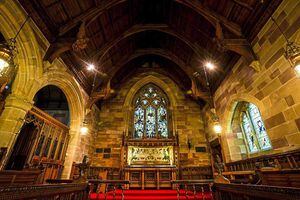
It was another five years, though, before Bibby commissioned the tower and spire in memory of his wife Sarah, adding a baptistry, font and south entrance. No expense was spared: the spire is crocketed and pinnacled, with two tiers of dormer windows.
Bibby died in 1897, and a series of stained glass windows by Clayton and Bell of London were installed in his memory.
Six bells were installed by John Taylor of Loughborough by 1894, their combined weight of eighty-one hundredweight meaning that they are currently recorded as the eleventh heaviest peal of six bells in the world. They were restored in 2014 by the original firm assisted by local volunteers.
The church has a strong tradition of bell ringing with the Clive Bell Ringers regularly welcoming teams from across the country. Two clock faces and a flat-bed Westminster movement were supplied by Joyce and Co of Whitchurch.
A particular feature of All Saints is the extensive graveyard featuring stone monuments carved by local masons.
Mr Haarhoff says the church has a regular congregation of between 25 and 40 members and plays an important role in the community, hosting regular events including an evening of organ and trumpet music on September 26, starting at 7.30pm.

